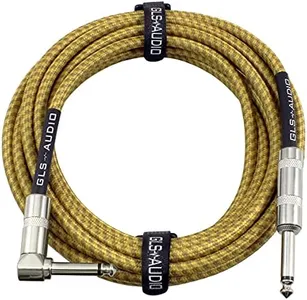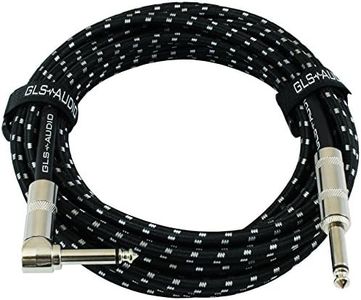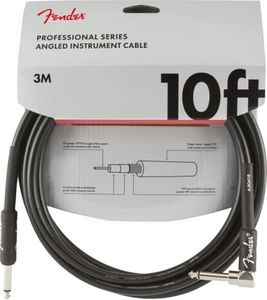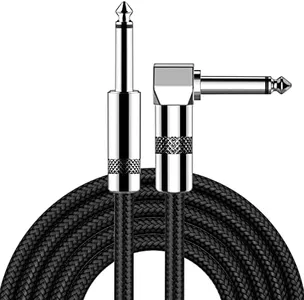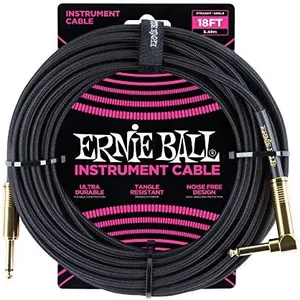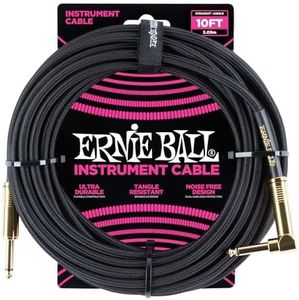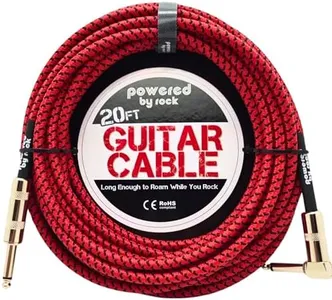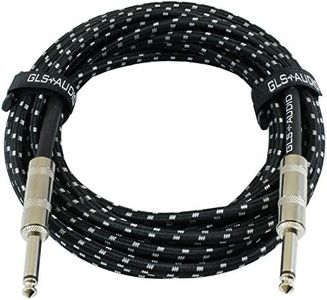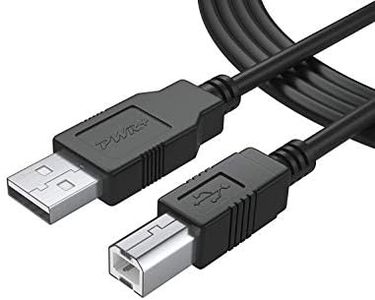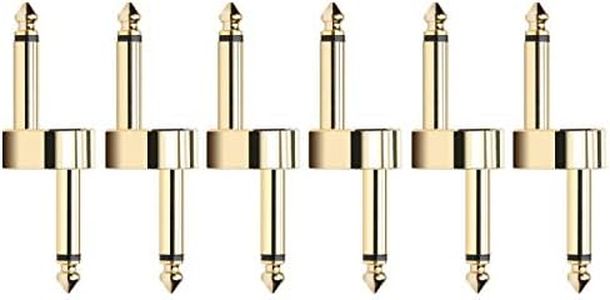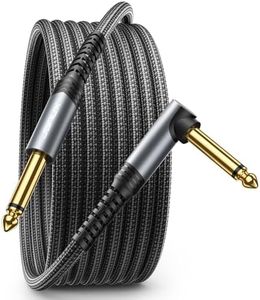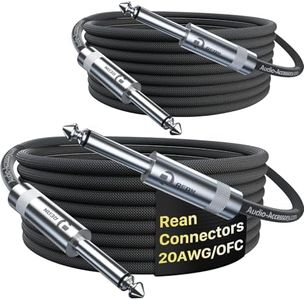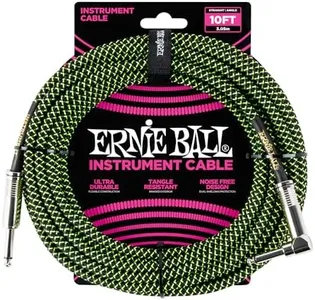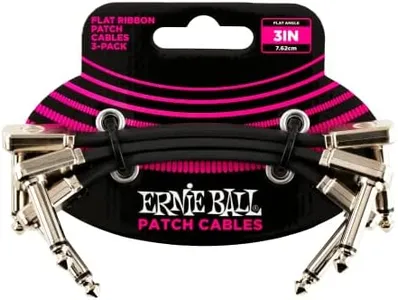10 Best Guitar Cables 2025 in the United States
Our technology thoroughly searches through the online shopping world, reviewing hundreds of sites. We then process and analyze this information, updating in real-time to bring you the latest top-rated products. This way, you always get the best and most current options available.

Our Top Picks
Winner
GLS Audio Instrument Cable - Amp Cord for Bass & Electric Guitar - Straight to Right Angle 1/4 Inch Instrument Cable - Black/Grey Braided Tweed, 20ft
Most important from
3275 reviews
The GLS Audio Instrument Cable is a 20ft long cable, making it a good choice if you need extra length to move around while playing. Its connector type is 1/4 inch TS with a straight to right-angle design, which can be practical in preventing strain on your guitar's input jack.
The cable boasts a braided tweed material, known for its durability and flexibility, which helps prevent tangles and twists. This makes it convenient for both storage and use on stage or in the studio. The use of high-quality oxygen-free copper ensures better signal quality. Additionally, the double insulator shields are designed to minimize noise, a key feature for anyone looking to maintain a clean sound.
The low capacitance further contributes to reducing signal loss, making it suitable for both bass and electric guitars. On the downside, while the product is durable and designed for flexibility, it might be slightly heavier due to the braided material, which might not appeal to everyone. This cable is particularly well-suited for musicians who need a reliable, long-lasting cable with good noise isolation and flexibility.
Most important from
3275 reviews
Fender Professional Series Instrument Cable, Guitar Cable, Guitar Accessories, Straight/Angle, Black, 10ft
Most important from
13468 reviews
The Fender Professional Series Instrument Cable is a 10-foot guitar cable designed for musicians seeking reliable performance. This cable offers both straight and angle 1/4-inch connectors, making it versatile for various setups. One of its notable strengths is the engineered design that prevents twisting and kinking, ensuring a hassle-free experience during use.
The 95% oxygen-free spiral shielding is flexible and significantly reduces handling noise, which is crucial for maintaining a clean sound during performances or recordings. The 8mm PVC jacket contributes to low noise interference, and the 22-gauge conductor ensures a strong signal path, which is beneficial for clear and uninterrupted sound transmission. The nickel-plated connectors add to its durability and reliability, while the lifetime guarantee from Fender provides peace of mind regarding its longevity.
Some users might find the cable a bit bulky due to the 8mm jacket, which could be a drawback for those looking for a more lightweight option. The cable's construction prioritizes durability and sound quality, making it suitable for both indoor and outdoor musical instrument signal transmission. This cable is particularly well-suited for musicians who value durability and sound clarity in their setups.
Most important from
13468 reviews
New bee Guitar Cable 10ft Electric Instrument Bass AMP Cord for Electric Mandolin, Pro Audio (Right Angle to Straight, Black)
Most important from
20809 reviews
The New bee Guitar Cable is a 10-foot cord designed for various musical instruments, particularly electric guitars and basses. One of its standout features is its low noise and high fidelity, thanks to the 22AWG oxygen-free copper center conductors and effective shielding. This makes it an excellent choice for those looking to maintain sound quality during performances or recordings. The cable also boasts a flexible design, making it easy to handle and store, which is a plus for musicians on the go.
In terms of compatibility, you can use this cable with a wide range of devices, including mixers, amplifiers, and microphones, which adds to its versatility. The connectors are designed with both straight and right-angle options, ensuring a secure fit in different setups, particularly useful for stage use.
Some users may find that the 10-foot length might not be long enough for larger setups or stages. Additionally, while the cable is marketed as being very flexible, durability regarding long-term wear and tear isn't specified, which could be a concern for heavy users. In conclusion, the New bee Guitar Cable is a solid choice for musicians seeking a reliable and versatile cable that delivers quality sound. However, it's important to consider your specific needs and whether the length and durability align with your usage before making a purchase.
Most important from
20809 reviews
Buying Guide for the Best Guitar Cables
Choosing the right guitar cable is crucial for ensuring the best sound quality and performance from your instrument. A good cable can make a significant difference in your overall playing experience, reducing noise and maintaining the integrity of your guitar's tone. When selecting a guitar cable, it's important to consider several key specifications to find the best fit for your needs.FAQ
Most Popular Categories Right Now
